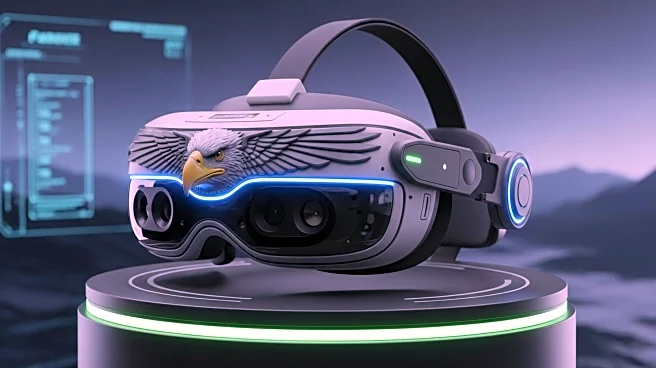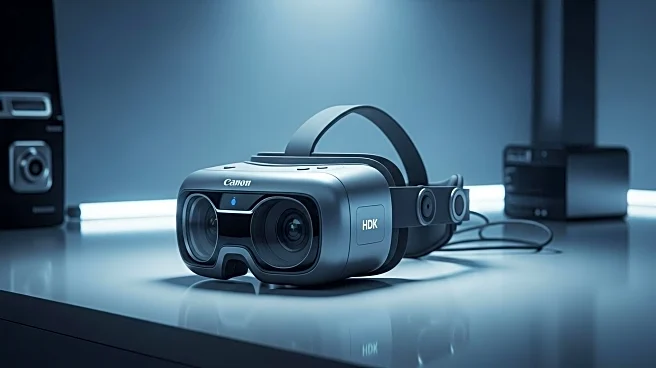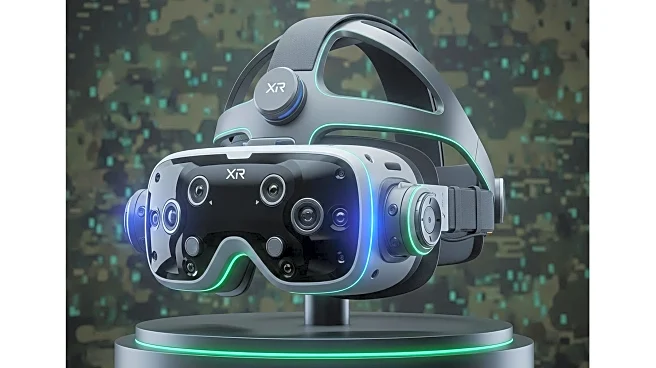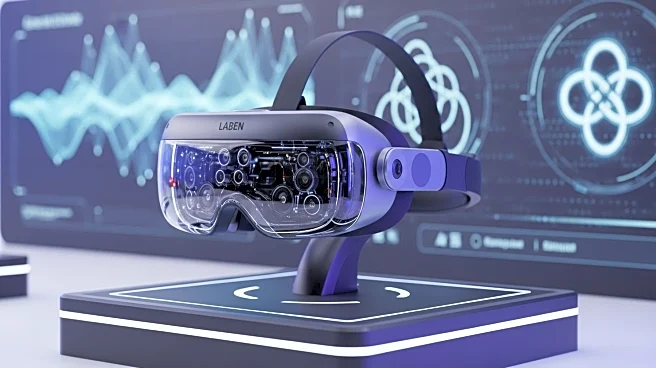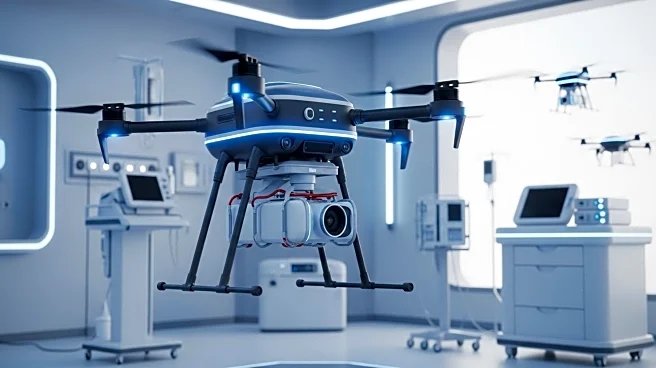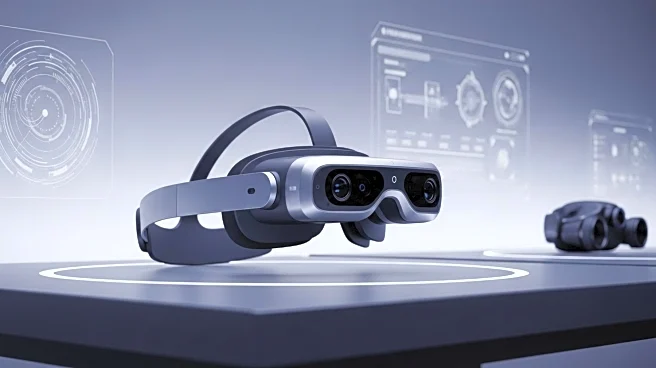What's Happening?
Anduril has introduced the Eagle Eye, a modular AI-powered headset designed for military use, as part of the Army's Soldier Borne Mission Command program. The headset, showcased at the AUSA annual meeting, aims to enhance augmented reality capabilities for soldiers. CEO Palmer Luckey highlighted the headset's modular design, allowing customization for different missions, such as day or night operations and varying levels of ballistic protection. The Eagle Eye integrates with helmets to distribute weight, making it lighter than traditional VR glasses. Anduril plans to collaborate with multiple partners to expand the headset's capabilities, aiming for widespread deployment.
Why It's Important?
The introduction of the Eagle Eye headset represents a significant advancement in military technology, potentially transforming how soldiers interact with augmented reality on the battlefield. By offering modular customization, the headset can cater to specific mission needs, enhancing operational efficiency and safety. This development could lead to increased adoption of augmented reality in military operations, improving situational awareness and decision-making. The collaboration with various partners suggests a move towards standardization in military tech, which could streamline production and reduce costs.
What's Next?
Anduril's Eagle Eye headset is poised for large-scale deployment, with plans to produce hundreds of thousands of units. The company aims to establish a common architecture for augmented reality headsets, encouraging other providers to create compatible devices. This could lead to a broader ecosystem of military AR technology, fostering innovation and competition. As the headset undergoes further development, stakeholders such as defense contractors and military agencies will likely monitor its progress and potential applications in various military contexts.
Beyond the Headlines
The Eagle Eye headset's modular design raises questions about the future of military technology and its integration with existing systems. Ethical considerations regarding privacy and data security in augmented reality applications may arise, as well as discussions on the impact of such technology on soldier training and readiness. Long-term, the success of Eagle Eye could influence civilian applications of augmented reality, driving advancements in industries like healthcare and education.


